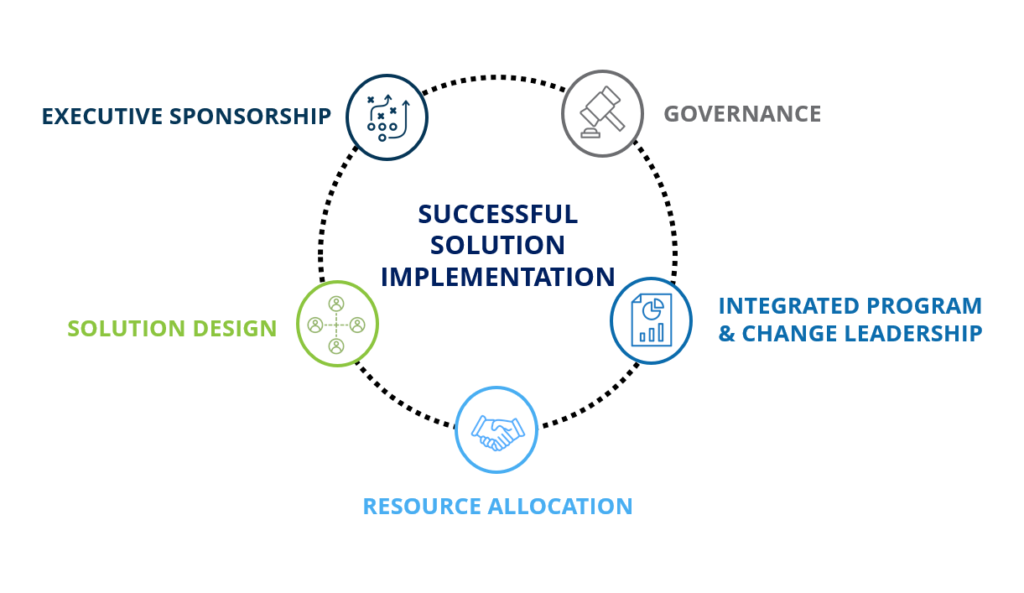Organizational Readiness – 5 Keys to Implementation Success
Your organization is looking at technology to improve workforce management capabilities and drive performance. Why? The return on investment is exciting, the new access to relevant information will empower your teams, and you will finally be able to comply with all of your complex work and pay rules without exhausting your payroll and human resources teams.

Although these goals are achievable, there are critical steps to be followed to make the transformation happen properly. Companies must make sure their organizations are ready for the change and are aligned around the desired results and how to get there. There is not one key to success, but five interconnected key focus areas to make sure your organization is ready. If any of these areas are not executed properly, the success of the project is put in jeopardy.
1. Executive Sponsorship
Without alignment and sponsorship at the executive level, projects can lose focus and be deprioritized throughout their lifecycle. There is always a long list of initiatives competing for attention at all levels. Drive active, robust executive sponsorship and ensure sponsors are active and visible throughout the engagement. When they are communicating the right messages directly to employees it keeps momentum strong. Build a coalition of sponsors to drive adoption and mitigate resistance.
2. Resource Allocation
It is difficult to commit resources to a project if the enterprise does not understand the value of the project. When it is clear a project can directly and positively impact the entire workforce, a team of top talent is critical. Commit to this enterprise-level effort by leveraging top talent to shape vision and strategy, as well as drive execution. It is not enough to hire a great services firm to assist. Outside support will eventually leave, and internal buy-in will be critical.
3. Solution Design
Solution design is a chance to review and improve processes. Although technologies are becoming so robust they address an almost all-inclusive list of potential configuration possibilities, this does not mean an organization should just apply business-as-usual mentalities to their projects. Assess your organization’s varying operating models and design solutions that bring a blend of standardization while also addressing unique business needs across operating models.
4. Integrated Program and Change Leadership
Alignment has a half-life. As soon as a team of aligned leaders leaves a meeting, they are hit with a wide range of other initiatives that often change their priorities. It is critical to drive alignment early and often across key stakeholders. Incorporate change management principles into project management to drive success across people, process, and technology.
5. Governance
Governance is important for a range of reasons, not least of which is accountability and clear measurement. Especially in companies with a range of divisions and global locations, governance can be complicated, but even more critical. Strategies to measure performance across the enterprise allow for better adoption of best practices from one group to another, clear accountability, and faster reaction times when things do not go as planned. Establish and manage processes that enable cross-company / functional coordination. Define mechanisms for driving decisions and managing scope, risks, and governance processes.

In short, to ensure success, you need a plan. Get clarity around all five areas with the proper change and program management team and don’t just implement. Get it done faster and better by following a proven methodology that increases adoption and shortens the timeline from the kick-off to the go-live finish line.
This blog appears courtesy of UKG.
